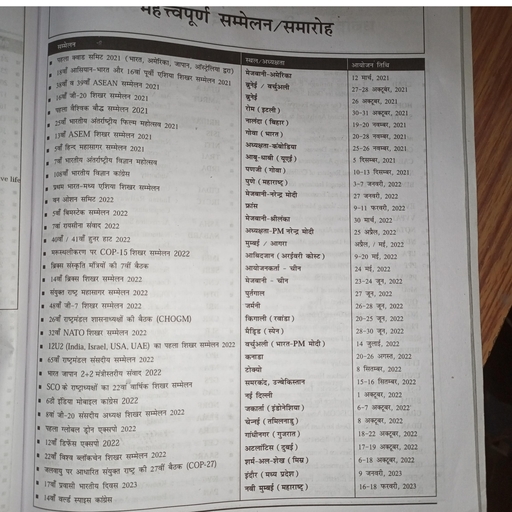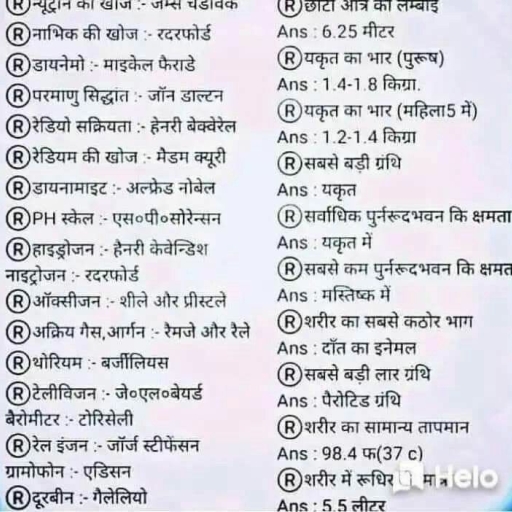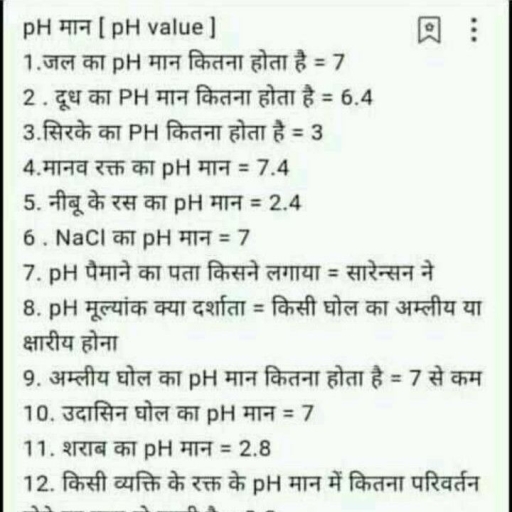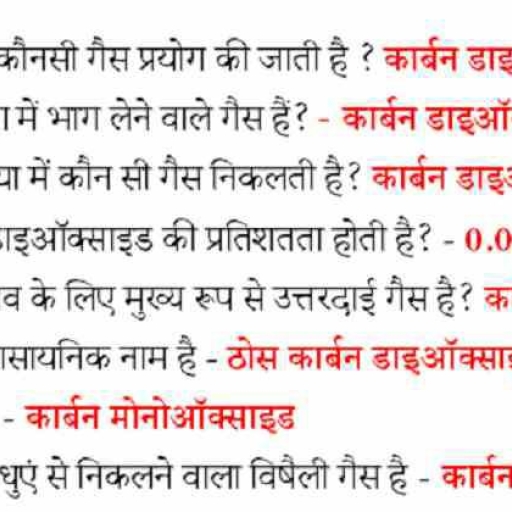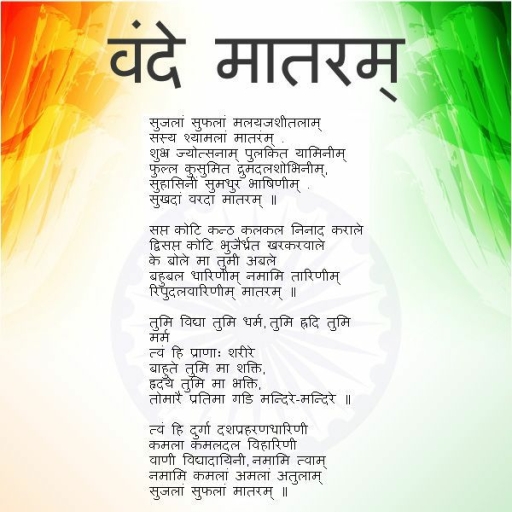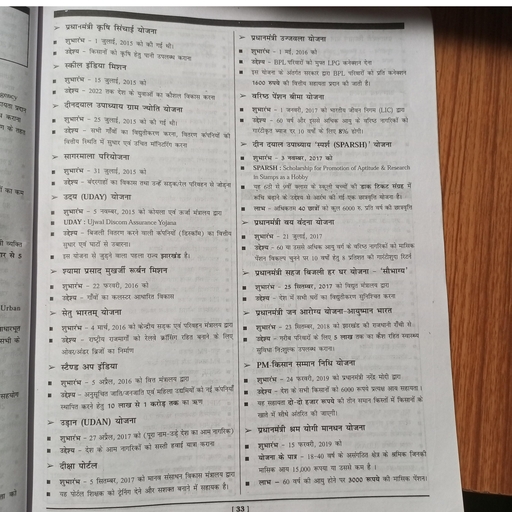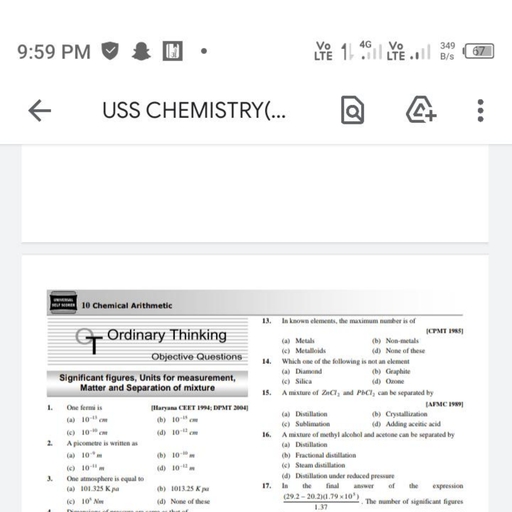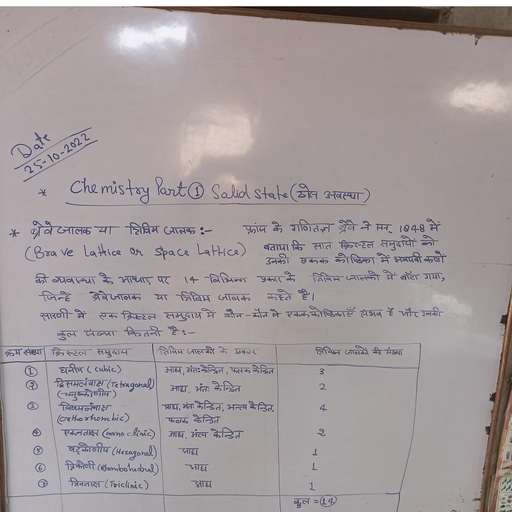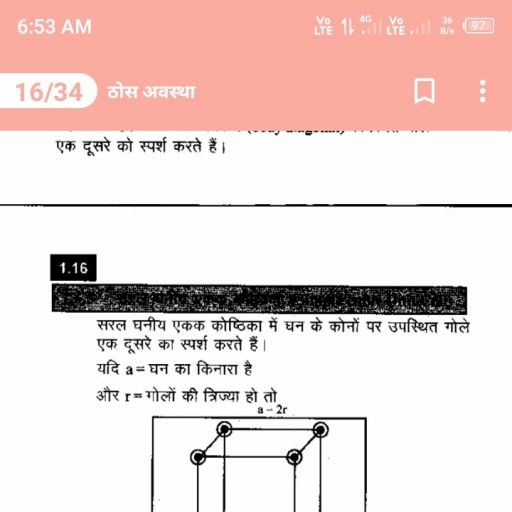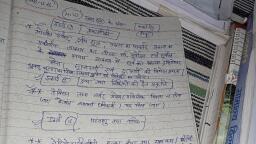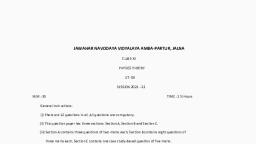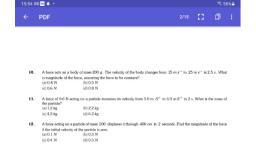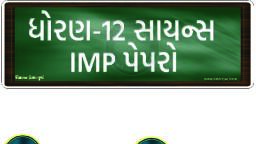Question 1 :
Assertion: The time of ascent for a body projected to move up a rough inclined plane is less than the time of descent
Reason: The retardation for upward motion is more than the acceleration for down motion
Question 2 :
If impulse $I$ varies with time $t$ as $f (kg ms^{-1})=20t^2 - 40t$. The change in momentum is minimum at
Question 3 :
A body of mass $5  kg$ undergoes a change in speed form $30 m/s$ to $40  {m}/{s}$. Its momentum would increase by
Question 4 :
A physics student is performing a experiment in which she twirls  rubber stopper at the end of a string around in a circle at nearly constant speed and tries to determine its acceleration. Which of the following single changes would enables her to most nearly double the acceleration of the rubber stopper?
Question 5 :
The time, in which a force of 2 N produces a change as momentum of 0.4 kg m s$^{-1}$ in the body is :<br>
Question 6 :
A small stone tied to an inextensible string of negligible mass is rotated in a circle of radius $2 m$ in a vertical plane. Find the speed at a horizontal point on the circle. (in $m/s$)
Question 10 :
It  is difficult for a fireman to hold a hose pipe which ejects large amounts of water at high velocity due to :<br/>
Question 11 :
When a fire man directs a powerful stream of water on a fire from a hose pipe, the hose pipe tends to go backward. This is an example of Newton's:
Question 13 :
The action and reaction forces referred to in Newton's third law of motion<br/>
Question 15 :
A force must act on a vehicle moving on a rough road in a straight line with uniform velocity.<br>
Question 16 :
A body of mass $60 kg$ has the momentum $3000 kg m s^{-1}$. Calculate the speed of the body.
Question 18 :
A force of $10 N$ acts on a body of mass $20 kg$ for $10 s$ .Change in its momentum is:<br/>
Question 19 :
A force of 20 N acts on the ball for short duration. If ball of mass 0.5 kg acquire a speed of 4 m/s from the rest. For how long did this force act on the ball?
Question 20 :
The strength of gravity on Mars is only $40\%$ of that on earth. If a child has a mass of $60\ kg$ on earth, what would the child's weight be on Mars?
Question 21 :
In a game of tug of wars, a condition of equilibrium exists. Both the teams pull the rope with a force of 10$^4$ N. The tension in the rope is :<br>
Question 23 :
If a man of mass M jumps to the ground from a height h and his centre of mass moves a distance x in the time taken by him to 'hit' the ground, and the average force acting on him (assuming his retardation to be constant during his impact with the ground) is
Question 25 :
A block of mass $50\, kg$ slides over a horizontal distance of $1\,m$. If the coefficient of friction between their surfaces is $0.2$,then work done against friction is:
Question 26 :
State whether the given statement is true or false :A horse continues to apply a force in order to move a cart with a constant speed.<br/>
Question 27 :
The sliding frictional force between 4 kg box and the floor is 15 N. It is pushed across the floor with a constant force such that it accelerates at $0.8 ms^{-2}$. What is the force applied to the box?<br>
Question 29 :
A boy pushes a wall with a force of $10 N$ towards east. What force is exerted by the wall on the boy?
Question 31 :
A car of mass 1000 kg moves on a circular path with a constant speed of 16 m/s .It is turned by ${ 90 }^{ \circ }$ after traveling 628 m on the side . the centripetal force acting on the car is -<br><br>
Question 33 :
A $60\ kg$ man pushes a $40\ kg$ man by a force of $60\ N$. The $40\ kg$ man has pushed the other man with a force of:<br/>
Question 34 :
A man is standing on a platform of a balance and takes a quick step, then his weight:<br/>
Question 35 :
Deformation of surfaces occurs due to which type of friction among the following?
Question 36 :
A body P has mass 2 m and velocity 5 v. Another body Q has mass 8 m and velocity 1.25 v. Find out the ratio of momentum of P and Q.<br/>
Question 37 :
A stone attains a momentum of $1\ kg\ m/s$ when it flies with a velocity of $2\ m/s$, then what will be the mass of the stone?
Question 38 :
A boat with a sail, has an electric fan inside. When the fan starts, the boat<br/>
Question 39 :
State whether given statement is True or False.<br/>It's possible to have motion in the absence of a force<br/>
Question 40 :
A person pushing a wall hard is liable to fall back. Which law is related for this ?
Question 41 :
The momentum of a 10 kg body moving at 36 km/h is:
Question 42 :
A fly-over bridge is a part of a vertical circle of radius $80\ m$ and a vehicle is travelling on it. The vehicle does not leave the surface of bridge at its highest point, if maximum speed of vehicle is:<br/>
Question 43 :
A disc of mass 10 g is kept floating horizontally by throwing 10 marbles per second against it from below. The marbles strike the disc normally and rebound downwards with the same speed. If the mass of each marble is 5 g, the velocity with which the marbles are striking the disc is $\displaystyle \left( g=9.8{ m }/{ { s }^{ 2 } } \right) $
Question 45 :
A force of 85 N is applied (parallel) to the incline surface on a block of weight 100 N resisting on the inclined plane $ \mu = 0.5  $ what will be the force?
Question 46 :
Statement 1: While drawing a line on a paper, friction force acts on paper in the same direction along which line is drawn on the paper.<br>Statement 2: Friction always opposes motion.
Question 48 :
Which of the following laws of motion is (are) involved in the motion of the rocket ?
Question 49 :
A man in a minivan rounds a circular turn at a constant speed. Which of the following would cause the minivan to experience less acceleration ?
Question 50 :
A man is at rest in the middle of a pond on perfectly smooth ice. He can get himself to the shore by making use of Newton's:<br/>
Question 51 :
Assertion: For an oscillating simple pendulum, the tension in the string is maximum at the mean position and minimum at the extreme position.
Reason: The velocity of the oscillating bob in simple harmonic motion is maximum at the mean position.
Question 52 :
A block of mass m is placed on another block of mass M, which itself is lying on a horizontal surface. The coefficient of friction between two blocks is u and that between the block of mass M and the horizontal surface is u. What is maximum horizontal force can be applied to the lower block so that the two blocks move without separation?
Question 53 :
A hockey ball of mass $50\ g$ travelling at $20\ m/s$ is struck by a hockey stick. So as to return it along its original path with a velocity at $20 m/s$ . Its change in momentum occured in the motion of the hockey ball by the force applied by the hockey stick:
Question 54 :
A 0.25kg ball attached to a 1.5 m rope moves with a constant speed of 15 m/s around a vertical circle. Calculate the tension force on the rope at the middle of the circle:
Question 55 :
A turn of radius $20$ m is banked for the vehicles going at a speed of $36 km/h$. If the coefficient of static friction between the road and the tyre is $0.4$. What are the possible speeds of a vehicle so that it neither slips down nor skids up? $\displaystyle \left ( g= 9.8m/s^{2} \right )$
Question 56 :
A force $(2\hat{i}+\hat{j}-\hat{k})\ N$ acts on a body which is initially at rest. At the end of $20 \ s$ the velocity of the body is $(4\hat{i}+2\hat{j}-2\hat{k})\ ms^{-1}$, then the mass of the body is:
Question 57 :
The length of a simple pendulum is  '$L$'. Its bob from rest position is projected horizontally with a velocity $\sqrt{\dfrac{7gL}{2}}$. The maximum angular displacement of bob, such that the string does not slack, is:<br/>
Question 58 :
A block is freely starts sliding down on a rough inclined plane from a vertical height $5\  m$. The block reaches the bottom of inclined plane then it just describes vertical circle of radius $1.2\  m$ along smooth track. The percentage of energy wasted due to friction is:<br/>
Question 59 :
A block A kept on an inclined surface just begins to slide if the inclination is $30^{\circ}$. The block is replaced by another block B and it is found that it just begins to slide if the inclination is $ 40^{\circ}$.
Question 60 :
A net force $\sum F_x(t) = A + Bt^2$ in the +x direction is applied to a girl of mass m. The force starts at t=0 and continues until time t.
Question 61 :
A road is $10 m $wide. Its radius of curvature is $50 m $. The outer edge is above the lower edge by a distance of $1./5 m $. This road is most suited for the velocity
Question 62 :
A pilot of mass $m$ can bear a maximum apparent weight $7$ times of $mg$. The aeroplane is moving in a vertical circle. If the velocity of aeroplane is $210\ m/s$ while driving up from the lowest point of vertical circle, the minimum radius of vertical circle should be:<br/>
Question 63 :
A machine gun fires bullets of 50 gm at the speed of 1000 m/sec. If an average force of 200 N is exerted on the gun, the maximum number of bullets fired per minutes is:
Question 64 :
Assertion: A pendulum is oscillating between points A, B and C. Acceleration of bob at points A or C is zero.
Reason: Velocity at these points is zero.
Question 65 :
The brakes of a car moving at $20 m/s$ along a horizontal road are suddenly applied and it comes to rest after travelling some distance. If the coefficient of friction between the tyres and the road is $0.90$ and it is assumed that all four tyres behave identically, find the shortest distance the car would travel before coming to a stop.<br/>
Question 66 :
A body of mass $1\ kg$ is rotating in a vertical circle of radius $1\ m$. What will be the difference in its kinetic energy at the top and bottom of the circle? Take $g = 10\ m/s^{2}$<br/>
Question 67 :
A car of mass m is moving on a level circular track of radius R. If $\mu _{s}$ represents the static friction between the road and tyres of the car, the maximum speed of the car in circular motion is given by:<br/>
Question 68 :
A player catches a ball of $200g$ moving with a speed of $20m/s$. If the time taken to complete the catch is $0.5$ sec, the force exerted on the players hand is
Question 69 :
A car moves at a speed of $20\ ms^{-1}$ on a banked track and describes an arc of a circle of radius $40\sqrt {3}$. The angle of banking is (take, $g = 10ms^{-2})$.
Question 70 :
An object of mass (m) is located on the horizontal plane at the origin O. The body acquires horizontal velocity V. The mean power developed by the frictional force during the whole time of motion is ($\mu $ = frictional coefficient)-
Question 71 :
If the racing cars move on a circular road of radius 100 m, with a speed of 30m/s , with an angle of banking equal to 15 degrees, what will be the coefficient of friction for safe driving
Question 72 :
A 500kg horse pulls a caw of mass 1500kg along a level road with an acceleration of $1 m/s^2$. If the coefficient of sliding friction is 0.2 then the horizontal force exerted by the earth on the horse is<br/>
Question 73 :
A vehical is traveling with uniform speed along concave road and then along convex road of same radius of curvature. If the normal reaction on the wheel is half of its weight as it reaches highest point of the convex road, then normal reaction on the vehical as it reaches the lowest point of concave road is:
Question 74 :
A minimum force $F$ is applied to a block of mass $102\ kg$ to prevent it from sliding on a plane with an inclination angle $30^{o}$ with the horizontal. If the coefficient of static and kinetic friction between the bock and the plane are $0.4$ and $0.3$ respectively, then the force $F$ is:
Question 75 :
A father and his seven year old son are facing each other on ice skates (assume no friction with the ground). With their hands, they push off against one another. Regarding the forces that act on them as a result of this and the accelerations they experience. Which of the following statements is correct?
Question 76 :
5 bullets, each of mass 10 gm are fired per second, vertically upwards, such that a plate of mass 200 gm floats in air. If the bullets rebound with the same velocity back vertically downwards, the velocity with which each bullet is fired in ms$^{-1}$ is:<br>(Take $g=10ms^{-2}$)
Question 77 :
The time, in which a force of 2 N produces a change in momentum of $0.4\, kg\, m\, s^{-1}$ in a body whose mass is 1 kg is: 
Question 78 :
The coefficient of friction between a body and an inclined plane is $\frac{1}{\sqrt{3}}$. If the body is just ready to slide down, the angle of inclination is
Question 79 :
A curved road is $7.5\ m$ wide and its outer edge is raised by $1.5\ m$ over the inner edge. The radius of curvature is $50\ m$. For what speed of the car is this road suited?$(g=10m/s^{2})$:<br/>
Question 80 :
Regarding linear momentum of a body<br>a. It is a measure of quantity of motion contained by the body<br>b. Change in momentum is the measure of impulse<br>c. Impulse and acceleration act in opposite direction to the change in momentum<br>d. In the case of uniform circular motion the linear momentum is conserved.
Question 81 :
A coin placed on a rotating turn table just slips if it is at a distance of $40\ cm$ from the centre if the angular velocity of the turntable is doubled, it will just slip at a distance of:
Question 82 :
During a planned manoeuvre in a space flight, a free-floating astronaut A pushes another  free floating astronaut B, the mass of A being greater than that of B. Then, the magnitude of the force exerted by astronaut A on astronaut B is:<br/>
Question 83 :
A stone of mass $1\ kg$ tied to a light inextensible string of length. $L = \dfrac{10}{3}$ metre is whirling in a circular path of radius, $L$, in a vertical plane. If the ratio of maximum tension to the minimum tension is $4$ and if $g$ is taken to be $10\ m/s^{2}$, the speed of the stone at the highest point of circle is :
Question 84 :
<br/>A block of mass 2 kg starts moving when the angle of inclination of the inclined plane is $60^0.$ if the coefficient of kinetic friction is 0.6, the frictional force is?
Question 85 :
Find the maximum speed at which a truck can safely travel without toppling over, on a curve of radius $250m$. The height of the centre of gravity of the truck above the ground is $1.5 m$ and the distance between the wheels is $1.5m$, the truck being horizontal.<br/>
Question 86 :
A body is moving with a velocity of $72 \ km/h$ on a rough horizontal surface of coefficient of friction $0.5$. If the acceleration due to gravity is $10\ m/s^2$. Find the distance covered it comes to rest.
Question 87 :
A simple pendulum is oscillating with an angular amplitude $60^{0}$. If mass of bob is $50\ gram$, the tension in the string at mean position is:<br/>$(g=10\ m/s^{2})$<br/>
Question 88 :
A ball moving with a speed $v$ hits a massive wall and returns with speed $v$. The impact lasts for time $\Delta t$, then which of the following are correct :
Question 89 :
A rocket of mass $4000\  kg$ is set for vertical firing. How much gas must be ejected per second so that the rocket may have initial upwards acceleration of magnitude $19.6\ m{ /s }^{ 2 }$? [Exhaust speed of fuel $=980m/s$]<br/>
Question 90 :
A $500\ kg$ horse pulls a cart of mass $1500\ kg$ along a level road with an acceleration of $1\ ms^{-2}$. If the coefficient of sliding friction is $0.2$, then the force exerted by the horse in forward direction is
Question 91 :
An aeroplane requires a speed of $108$ $kmph$ to take off, to achieve that plane runs on the runway of $100$ $m$. Mass of the plane is $10400$ $kg$ and the coefficient of friction between the plane and the ground is $0.2$. Assuming the plane accelerates uniformly, the minimum force required is (Take $g=9.81 \ m/s^2$)<br/>
Question 92 :
The circumference of a circular track is $400\pi/m$. If the optimum speed with which a vehicle can be driven along it is to be $20\ m/s$, the angle of banking of the road must be about
Question 93 :
A block of mass $5\ kg$ is kept on a horizontal floor having coefficient of friction $0.09$. Two mutually perpendicular horizontal force of $3\ N$ and $4\ N$ act on this block. The acceleration of the block is: $(g=10\ m/s^{2})$
Question 94 :
A car is travelling along a circular curve that has a radius of $50 m$. If its speed is $16 m/s$ and is increasing uniformly at $8 m/s$ $^{2}$. Determine the magnitude of its acceleration at this instant.<br/>
Question 95 :
A bullet is fired from a gun, the force on the bullet is given by $F = 600-  2 \times 10^{5} t$ where $F$ is in newton and $t$ in second. The force on the bullet becomes zero as soon as it leaves the barrel. What is the average impulse imparted to the bullet?
Question 96 :
A hammer of mass 1 kg moving with a speed of 6 m/s strikers a wall and comes to rest in 0.15, calculate Retarding force that stops the hammer.
Question 97 :
A rocket with a lift-off mass $3.5\times {10}^{4}$ kg is blasted upwards with an initial acceleration of $10m/{s}^{2}$. Then the initial thrust of the blast is:<br/>
Question 98 :
The bob of a simple pendulum is given a velocity in horizontal direction when the bob is at lowest position ,so that the bob describes vertical circle of radius equal to length of pendulum and tension in the string is $10 \ N$ when the bob is at an angle $60^0$ from lowest position of vertical circle. The tension in the string when the bob reaches highest position is (The mass of bob is $ 100$ gram. $g = 10\ ms^{–2}$):<br/>
Question 99 :
A stone of mass $1kg$ is tied to the end of a string of $1m$ length. It is whirled in a vertical circle. If the velocity of the stone at the top be $4m/s$. What is the tension in the string (at that instant)?
Question 100 :
A car is moving on a circular road of curvature 300 m.If the coefficient of friction is 0.3 and acceleration due to gravity is $10 m/s^2$,the maximum speed the car can have is:
Question 101 :
Approximate distance travelled by the block when it comes to rest for a second time (not including the initial one) will be (Take $\sqrt {45}=6.70)$
Question 102 :
A particle of mass 0.1 kg moving with an initial speed v collides with another particle of same mass kept at rest. If after collision the total energy becomes 0.2 J, then:
Question 103 :
The angle of banking $\theta$ for a cyclist taking curve is given by $tan\theta=\dfrac { { v }^{ n } }{ rg }$, where symbols( v= speed of the cyclist, r= radius of the curved path, g= acceleration due to gravity) have their usual meanings.Then the value of $n$ is equal to
Question 104 :
Assertion: STATEMENT-1 : If the mass of the colliding particles remains constant, then the linear velocity of the individual particles change during collision along common normal direction.
Reason: STATEMENT-2 : A pair of equal and opposite impulses act along common normal direction.
Question 106 :
A bend in a level road  has a radius of $10 m$. Calculate the maximum speed which a car turning this bend may have without skidding. ($\mu\, =\, 0.81$)
Question 107 :
A ball tied to the end of the string swings in a vertical circle under the influence of gravity.
Question 108 :
A body of mass $m=10^{-2}\ kg$ is moving in medium and experiences a frictional force $F=-kv^2$. Its initial speed is $v_0=10\ ms^{-1}$. If, after $10\, s$, its energy is $\dfrac{1}{8}mv_0^2$, the value of $k$ will be :
Question 109 :
A skater of mass m standing on ice throws a stone of mass M with a velocity of V in a horizontal direction. The distance over which the skater will move back (the coefficient of friction between the skater and the ice is $\mu$) :<br>
Question 110 :
Frictional force acting on the block after it comes to rest :
Question 111 :
A cricket ball of mass $0.25 kg$ with speed $10 m/s$ collides with a bat and returns with same speed within $0.01s$. The force acted on bat is (in $N$):
Question 112 :
An unbanked curve has a radius of $60\ m$. The maximum speed at which a car can make a turn if the coefficient of static friction is $0.75$, is:
Question 113 :
A block of $1\ kg$ is stopped against a wall by applying a force $F$ perpendicular to the wall. If $\mu=0.2$ then minimum value of $F$ will be :
Question 114 :
A small mass slides down an inclined plane of inclination $\theta$ with the horizontal. The co-efficient of friction is $\mu\, =\, \mu\, x$ where x is the distance through which the mass slides down and $\mu$ a constant. Then the speed is maximum after the masscovers a distance of:
Question 115 :
What is the actual frictional force when the man has climbed $1.0$ m along the ladder?
Question 116 :
Assertion: A cloth covers a table. Some dishes are kept on it. The cloth can be pulled out without dislodging the dishes from the table.
Reason: For every action there is an equal and opposite reaction.
Question 117 :
Assertion: The bob of a simple pendulum is a ball full of water. If a fine hole is made in the bottom of the ball, the time period first increases and then decreases.
Reason: As water flows out of the bob the weight of bob decreases.
Question 118 :
A car moves on a horizontal track of radius $r$, the speed increasing constantly at rate $ \dfrac { dv }{ dt }  $ <br> $ = a$. The coefficient of friction between road and tyre is $ \mu $. Find the speed at which the car will skid. <br/>
Question 119 :
A ball of mass $50\ g$ strikes on the wall with speed $50\ ms^{-1}$ perpendicular o wall and rebounds with same speed. Impulse imparted to the wall during by the impact is
Question 120 :
An object is said to be in equilibrium when:<br/>1. there is no net force acting on the object<br/>2. the total clockwise moments about any point is equal to the total anti-clockwise moments about the same point<br/>3. the object moves with constant velocity
Question 121 :
A particle slides on surface of a fixed smooth sphere starting from topmost point. The angle rotated by the radius through the particle, when it leaves contact with the sphere, is
Question 122 :
A block of mass $2\ kg$ rests on a rough inclined plane making an angle of ${30}^{o}$ with the horizontal. The coefficient of static friction between the block and the plane is $0.7$. The frictional force on the block is
Question 123 :
The limiting value of static friction between two contact surfaces is :
Question 124 :
A boy is sitting on a horizontal platform in the shape of a disc at a distance of $5m$ from its center. The boy begins to slip when the speed of wheel exceeds $10rpm$. The coefficient of friction between the boy and platform is ($g=10{ms}^{-2}$)
Question 125 :
You normally note the speed limits mentioned on highways (on straight roads without turns). Why? <br>
Question 126 :
A solid sphere, a hollow sphere and a solid cylinder, all having equal mass and radius, are placed at the top of an incline and released. The friction coefficients between the objects and the incline are equal and but not sufficient to allow pure rolling. Greastest time will be taken in reaching the bottom by
Question 127 :
A $4g$ bullet is fired horizontally with a speed of $300 m/s$ into $0.8 kg$ block of wood, which is at rest on a table. If the coefficient of friction between the block and the table is $0.3$, how far will the block slide approximately?
Question 128 :
A stone of mass $1\ kg$ tied to a light inextensible string of length $L = \dfrac{10}{3}\ m$, whirling in a circular path in a vertical plane. The ratio of maximum tension in the string to the minimum tension in the string is $4$. If g is taken to be $10\ m/s^2$ the speed of the stone at the highest point of the circle is
Question 129 :
A weightless thread can bear tension upto $37 N$. A stone of mass $500 g$ is tied to it and revolved in a circular path of radius $4 m$ in a vertical plane. If $g=10 {ms}^{-2}$, then the maximum angular velocity of the stone will be:
Question 130 :
Five identical balls each of mass $m$ and radius $r$ are strung like beads at random and at rest along a smooth, rigid horizontal thin rod of length $L$, mounted between immovable supports. Assume $10r < L$ and that the collision between balls or between balls and supports are elastic. If one ball is strung horizontally so as to acquire a speed $v$, the average force felt by the support is:<br/>
Question 131 :
The distance to which an electron of a hydrogen atom is to be removed from the atom so that the force of electrostatic attraction is equal to six times the weight of the atom, will be :[Take $g = 10\ m/s^{2}$ and number of atoms in $1\ kg$ of monoatomic hydrogen is $6$ x $10$ <br> $^{26}$]
Question 132 :
A heavy block of mass $M$ is slowly placed on a conveyer belt moving with a speed $v$. The coefficient of friction between the block and the belt is $\mu$. Through what distance will the block slide on the belt ? <br/>
Question 133 :
A wheel of radius r rolling on a straight line, the velocity of its centre being v. At a certain instant the point of contact of the wheel with the grounds is M and N is the highest point on the wheel(diametrically opposite to M). The incorrect statements is?
Question 134 :
A block of mass 15 kg is placed on a long trolley The coefficient of friction between the block and trolley is 0. 18 The trolley accelerates with 0.5 m/$s ^ { 2 }$ for 20 s then what is the friction force
Question 135 :
A simple pendulum is released from rest with the string in horizontal position. The vertical component of the velocity of the bob becomes maximum, when the string makes an angle $\displaystyle \theta $ with the vertical. The angle $\displaystyle \theta $ is equal to
Question 136 :
Two persons $P$ and $Q$ of the same height are carrying a uniform beam of length $3 m$. If $Q$ is at one end, then the distance of $P$ from the other end such that $P$, $Q$ receive loads in the ratio $5 : 3$ is:<br>
Question 137 :
An elastic string carrying a body of mass $m$ at one end extends by $1.5\ cm$. If the body rotates in vertical circle with critical velocity, the extension in the string at the lowest position is:<br/>
Question 138 :
A chain of length $L$ and mass $m$ is allowed to fall on a table such that the part falling on the table comes to rest simultaneously. The force acting on the table when $l$ part of it has lied on the table is:<br/>
Question 139 :
A car is travelling along a circular curve that has a radius of 50 m. If its speed is 16 m/s and is increasing uniformly at $\displaystyle 8 m/s^{2},$ determine the magnitude of its acceleration at this instant.
Question 140 :
A car taken a turn along a curved road of radius $40$ m and the angle of banking of the road is $\displaystyle {45} ^ {o} $. At what maximum speed can the car be driven so that it may not skid. $\displaystyle (g\ = {10\ ms} ^{-2} $).
Question 141 :
A rod of length $l$ and mass $m$ fixed at one end, it hanging vertically. The other end is now raised so that the rod makes an angle ${30}^{o}$ with horizontal line. The work done in this process will be:
Question 142 :
To avoid slipping while walking on ice, one should take smaller steps because:<br>
Question 143 :
An object is placed on the surface of a smooth inclined plane of inclination $\theta$. It takes time $t$ to reach the bottom. If the same object is allowed to slide down a rough inclined plane of same inclination $\theta $, it takes times nth to reach the bottom where $n$ number greater than $1$. The coefficient of friction $\mu$ is given by:
Question 145 :
Three coplanar forces keep a body in equilibrium. The angles between adjacent forces are in the ratio of $3:4:5$. The ratio of maximum force to the minimum force is
Question 147 :
Which of the following statements for a rigid object undergoing pure translational motion are<b> </b>false?<br/>
Question 148 :
<p>A stationary ball weighing $0.25\  kg$ acquires a speed of $10 \ m/s$ when hit by a hockey stick. The impulse imparted to the ball is:</p>
Question 149 :
A block of mass M is pulled along a horizontal rough surface by a rope of mass m by applying a force F at one end of the rope. f is the friction between block and the surface. The force which the rope exerts on the block is:
Question 150 :
A block rests on a rough inclined plane making an angle of $30^{0}$ with the horizontal. The coefficient of static friction between the block and the plane is 0.8. If the frictional force on the block is 10 $\mathrm{N}$, the mass of the block (in kg) is $($take $\mathrm{g}=10\mathrm{m}\mathrm{s}^{-2})$: <br>









